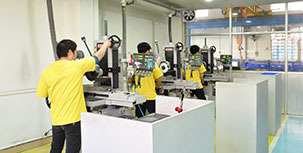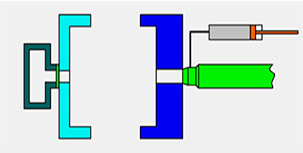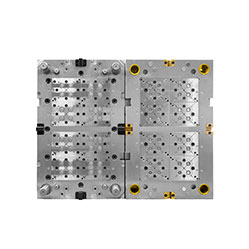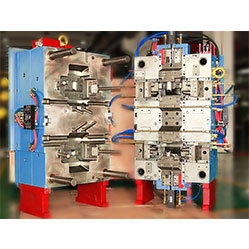Key points of plastic injection mold runner system
The sub-runner is a transitional channel between the main runner and the gate, as the sub-runner is the longgest part of gating system, so it is very important to enhance the parts quality and improve the productivity by reducing sub-runner process and flow resistance.
Sub-runner requirements:
① Bring the air in the gating system and the cold material at the front side of the melt into the cavity as less as possible to improve the molding quality.
②The runner resistance to the melt should be small, and the volume flow rate should be large to reduce the pressure and temperature loss when the melt flows through the runner.
③The solidification time of the runner should be later than the solidification time of the melt in the cavity to facilitate feeding.
④Ensure that the melt enters each cavity or every corner of the same cavity quickly and evenly.
⑤ The length of the runner should be as short as possible, and its volume should be as small as possible.
⑥The shape and size should be convenient for processing and tool selection.
⑦The upper-level runner is 10%~20% larger than the next-level runner.
Factors affecting the sub-runner design:
①The geometric shape, wall thickness, size, stability, internal quality and appearance quality requirements of plastic parts.
②The variety of plastics, that is the fluidity, melting temperature and melting temperature range, solidification temperature and shrinkage rate of the plastic.
③The pressure, heating temperature and injection speed of the injection molding machine.
④ Falling off method of main runner sub runner.
⑤The cavity layout, the gate location and type.
Key points of sub-runner design:
Cross-sectional area: as small as possible under the conditions of the injection process.
Distribution: compact and symmetrical, minimize the total area of the forming area.
Shape: The ratio of cross-sectional area to perimeter is as big as possible.
Length: as short as possible; the length of the runners of each cavity should be as equal as possible.
Steering: as few times as possible and rounded transitions.
Roughness of the inner surface: It is not necessary to be very light, so that the outer layer of the material flow forms a cooling layer for heat preservation, Ra=0.8~1.6μm.
Condensate ejection: This is particularly desirable when a sprue puffier is used when sub-runner is in cavity side or it is long.
The end of the sub-runner should be provided with a cold well and exhausting-slot .


The air trapping position in cavity and exhaust method
Mar 2, 2022The air trapping in cavity is usually in the following places: 1. Thin-wall structure cavity, the end of melt flow; 2. The junction of two or more melts; 3. The last area where the melt in the cavity...view
Gate position determination of plastic injection mold runner design system
Jan 17, 2022In the selection of gate location, the following issues should be paid attention to: 1. The gate position should be set at the maximum wall thickness of the plastic part, so that the plastic melt...view
Five Major Steps of the Injection Mold Production Process
Dec 9, 2021Injection mold manufacturing can be roughly divided into the following steps: Process analysis of plastic products. Before the mold design, the designer should fully analyze and study whether the...view_20250317091228A019.jpg)
Main application of gas-assisted molding technology
Apr 7, 2022Gas-assisted molding has a particularly obvious effect on the material saving of tubular and rod-shaped plastic parts, such as car handles, seat armrests, window frames, and wood-like furniture, the...view
The difference between full shot and short shot of gas-assisted injection molding
Apr 13, 2022Gas-assisted injection molding can be divided into short shot and full shot. Short shot The short shot method is shown in picture 1, it is suitable for thick-walled plastic parts with low mold filling...view
Controling method of plastic injection mold temperature
Feb 15, 2022Except for heat radiation and heat convection from the mold, most of the heat bring into the mold by the plastic needs to be taken out of the mold by the circulating heat transfer medium by heat...view
 English
English русский
русский



